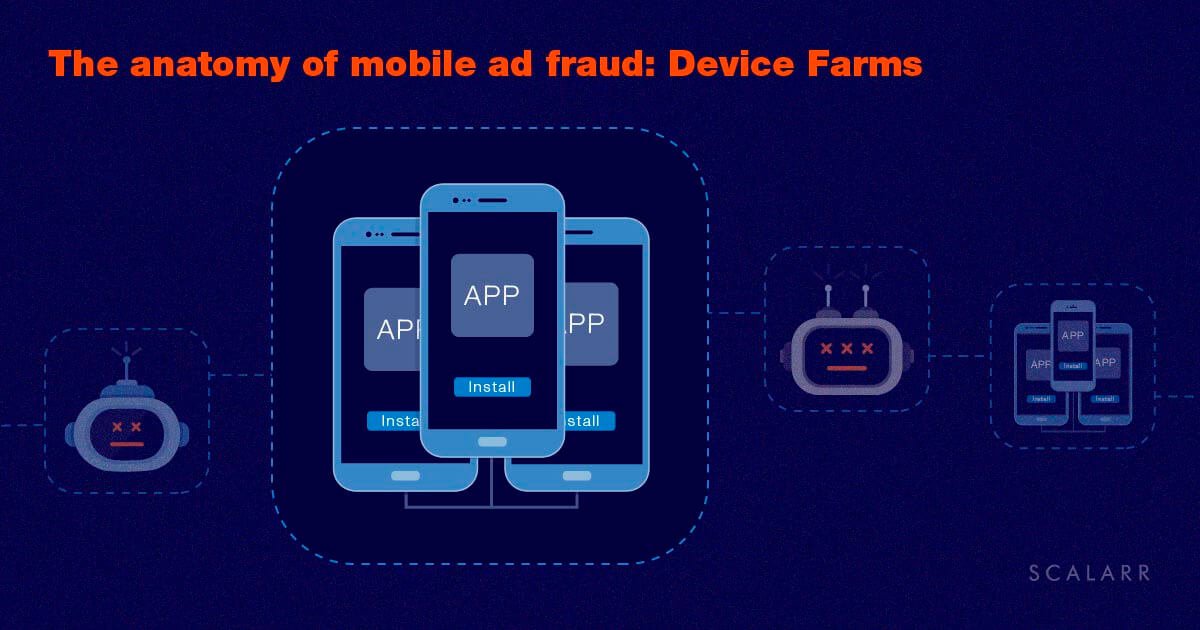
Along with Bots, Device Farms are one of the oldest types of fraud. Device Farms are a physical location with a lot of devices on which fraudsters manually perform different actions: clicks, installs, registrations, views, impressions, etc. At Scalarr we classify this type of fraud in the Classic Fraud category.
Quick facts
1. In 2018 Device Farms were responsible for 5,8% of all fraud cases.
2. Android devices are more commonly used for Device Farms, as well as “Hybrid Farms” - when fraudsters use only the motherboards, not whole devices.
3. Device farms can have several thousand devices faking post-install events for as long as a month after each install.

How Device Farms work
1. Fraudsters connect to several publishers, constantly monitor all available apps/games which need paid traffic sources, and target them for fraud.
2. Then they perform analysis to determine the expected KPI for good traffic quality.
3. Finally the device farm operator gets these parameters: how to download the targeted apps/games and what post-install events to perform afterward for each. More complex device farms use “matrices”, which automate operator work and perform the same actions across multiple devices simultaneously.
How to deal with Device Farms
More primitive Device Farms are identified by detecting numerous installs from one device, or by detecting numerous installs from several identical IP addresses. However, considering that each fraud farm has its own constantly evolving scripts and algorithms, successful detection requires detailed analysis of all data points for post-install events.
Read Scalarr’s Ultimate Guide to Mobile Fraud Types to understand more about dealing with Device Farms in all specific cases.
The only solution for mobile advertisers is to partner with anti-fraud tools that make use of powerful and intelligent technologies such as machine...
The road to Scalarr's foundation was paved with challenges and opportunities and in this in-depth conversation, you'll learn the story of Scalarr f...